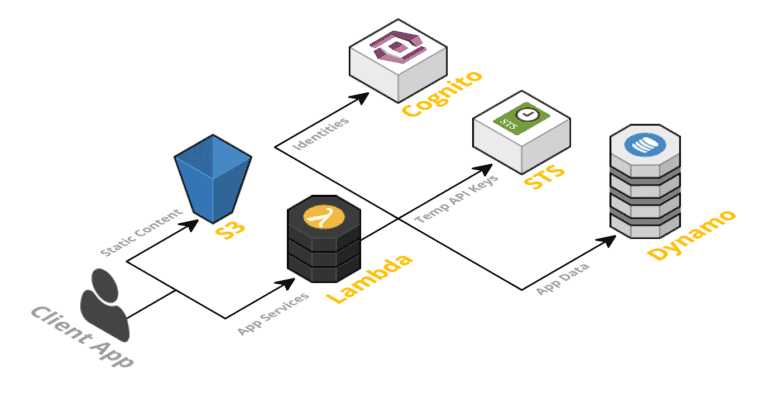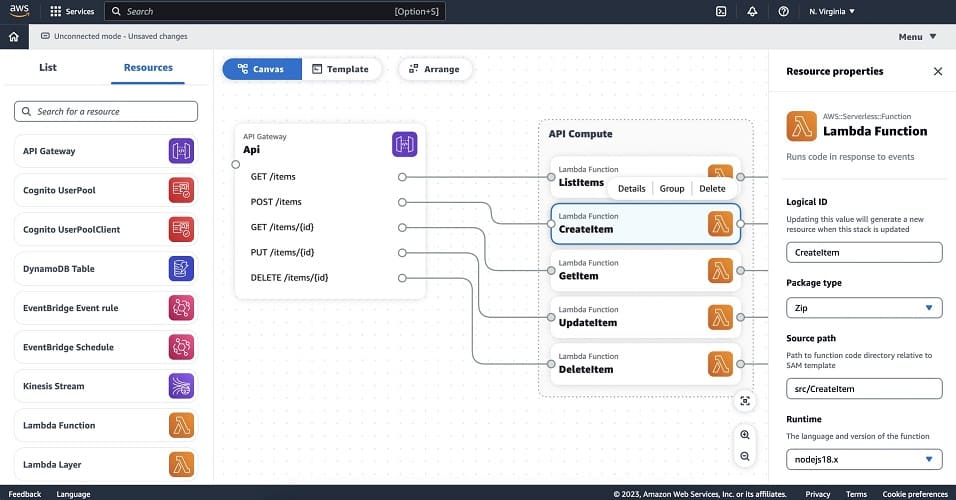AWS is making Application Composer available. This tool enables the visual design of serverless applications.
AWS Application Composer gives developers of serverless applications a visual environment to which they can add resources and connect them together. Access to this environment is through the AWS Management Console. The permissions required for the various resources to work together are automatically set by the tool.
More functionality
AWS Application Composer also allows the respective project to be viewed as YAML code. It uses an AWS Cloud Formation template that synchronizes text and image for this. AWS Cloud Formation is another solution for automating the creation and maintenance of AWS resources.
The new tool additionally has an option, for Chrome and Edge only, to give browsers temporary permission to read and write files. This allows a project to be synced to IDE files, such as Visual Studio Code. Another option is to use the tool to import an existing Cloud Formation template in order to visualize its content.
Other functionality includes the introduction of enhanced integration with Amazon Simple Queue Service (SQS). This is a “change inspector” that shows exactly what changes when (AWS) resources are connected.
For application deployment, the tool works in conjunction with the AWS SAM CLI. This collaboration allows an application to be created through AWS Application Composer and then deployed using the SAM CLI.
Currently, the service supports 13 AWS services. These include Lambda, API Gateway, Cognito, EventBridge (for scheduling), DynamoDB, S3 and the aforementioned SQS. In addition to this, so-called hidden and read-only resources will also be supported.
Also read: “Subscription model is an aberration, we need to move to Usage-Based Pricing”

